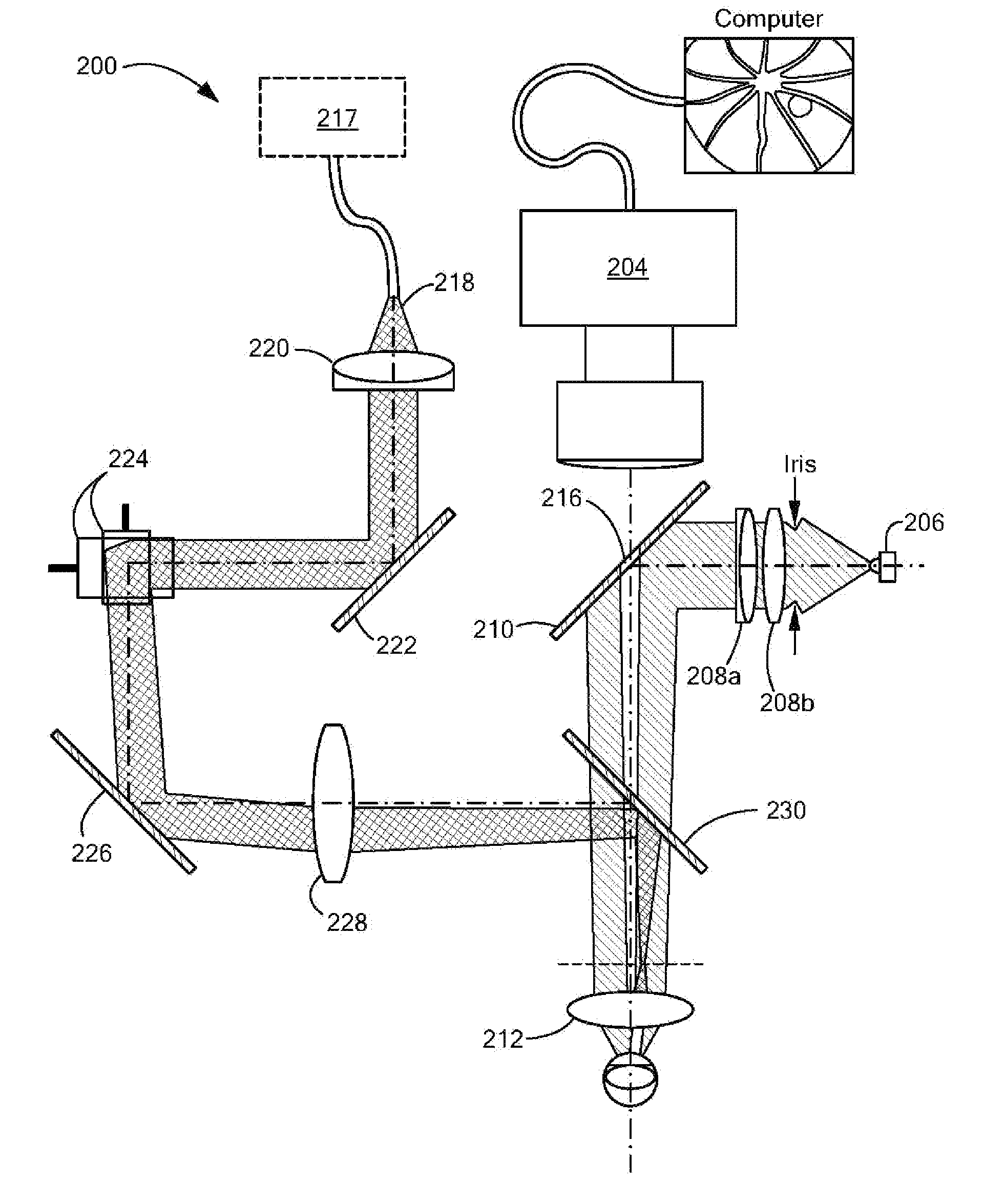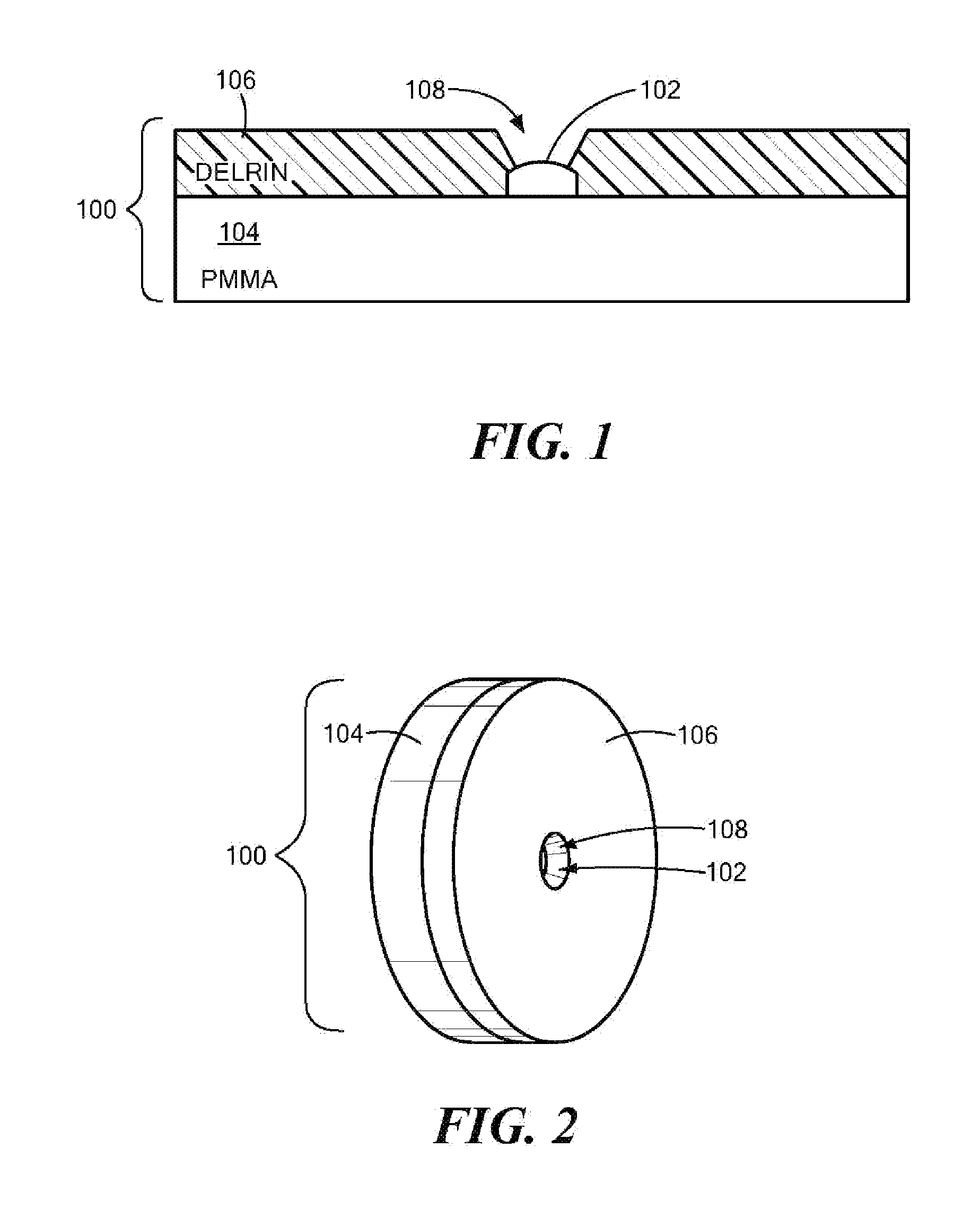Retinal imaging system for the mouse or rat or other small animals
a retinal imaging and mouse eye technology, applied in the field of retinal imaging systems for mouse or rat or other small animals, can solve the problems of difficult image capture, difficult to achieve image capture, and difficult to achieve image quality
- Summary
- Abstract
- Description
- Claims
- Application Information
AI Technical Summary
Benefits of technology
Problems solved by technology
Method used
Image
Examples
Embodiment Construction
[0017]Referring now to the figures in which like reference designators refer to like elements, there is shown in FIG. 1 a cross-sectional view of a model mouse eye used to calibrate an OCT imaging system in accordance with the principles of the present invention referred to generally as “100.” The model eye 100 may comprise a plano-convex lens 102 with an optical power matching the optical power of the mouse eye (approximately 560 D). The plano-convex lens 102 may be approximately 2.5 mm in diameter. The model eye 100 may further include a Polymethyl methacrylate (PMMA) disc 104, or other similar material, placed in contact with the posterior surface of the plano-convex lens 102. The PMMA disc 104 may be approximately 25.4 mm in length, or any length, and have a height of approximately 3.72 mm, or any height. The posterior surface of the PMMA disc 104 may be located coincident with the focal plane of the plano-convex lens 102 (seen in FIG. 3). A black, or similarly colored disc 106,...
PUM
 Login to View More
Login to View More Abstract
Description
Claims
Application Information
 Login to View More
Login to View More - R&D
- Intellectual Property
- Life Sciences
- Materials
- Tech Scout
- Unparalleled Data Quality
- Higher Quality Content
- 60% Fewer Hallucinations
Browse by: Latest US Patents, China's latest patents, Technical Efficacy Thesaurus, Application Domain, Technology Topic, Popular Technical Reports.
© 2025 PatSnap. All rights reserved.Legal|Privacy policy|Modern Slavery Act Transparency Statement|Sitemap|About US| Contact US: help@patsnap.com



